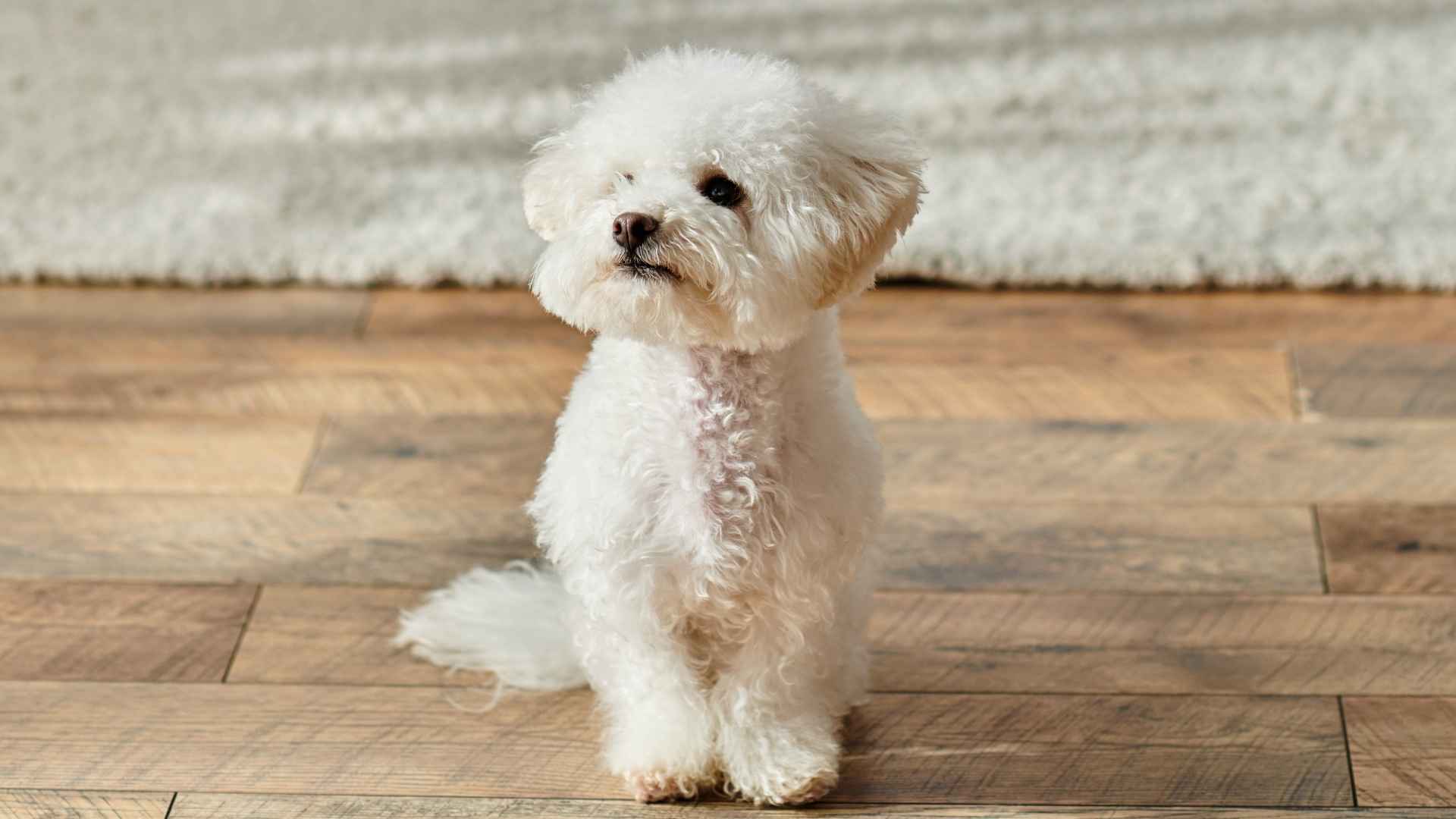According to the NIH, between 10% and 20% of people globally are affected by allergies to cats and dogs. While no dog is completely hypoallergenic, some breeds are known to produce far less dander, the real culprit behind most allergic reactions.
These non-shedding dogs have more predictable coats that trap less dander and shed far less hair, making them a smart option for sensitive households. They’re not just allergy-friendly, they’re also great with kids, often playful, and full of charm.
To make your space even more allergy-proof, consider simple adjustments like washing dog beds regularly, skipping heavy drapes, or using a vacuum and air purifier designed for pet homes. With the right breed and a little preparation, living harmoniously with a four-legged friend is absolutely possible, even if you’re a chronic sneezer.
Best Dog Breeds That Don’t Shed
1. Bedlington Terrier
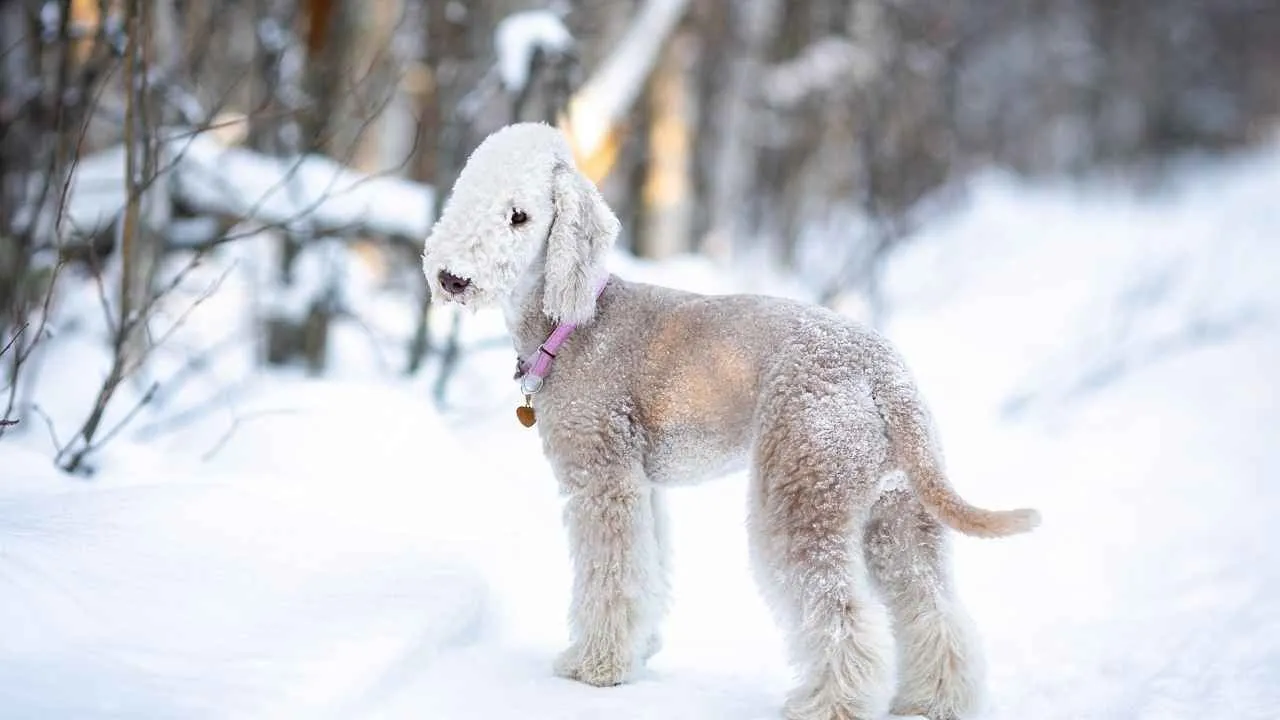
Pet MD states that the Bedlington Terrier is known for its endearing personality, affectionate, devoted, and gentle in nature. With its tight, curly, non-shedding coat, the Bedlington Terrier is an excellent choice for people who want a companion without the constant shedding.
While this breed does require regular brushing and grooming, it won’t leave a trail of fur behind, making it perfect for neat freaks and allergy sufferers alike. Its woolly texture not only adds charm but also keeps loose dander and hair to a minimum.
History
Despite their soft, lamb-like appearance, Bedlington Terriers have a surprisingly tough background. Originating in the Northumberland mining town of Bedlington, these dogs were bred for grit and versatility. In the 1800s, they served as coal mine ratters, varmint hunters, and even dogfighting competitors.
Their sharp instincts and courage earned them a reputation as fierce yet clever workers. Over time, their sweet temperament helped them transition from miners’ companions to beloved pets of British aristocrats.
Care and Considerations
Though mellow at home, Bedlingtons retain a terrier’s prey drive, which means early training and careful supervision around small animals are crucial. They enjoy moderate exercise, thriving on daily walks and play sessions.
Grooming is non-negotiable: their coats must be brushed multiple times a week and professionally clipped every couple of months to prevent matting.
Fun Fact
The very first Bedlington Terrier, named Piper, was reportedly still taking down badgers at age 14, despite being nearly blind and toothless.
2. Bichon Frise
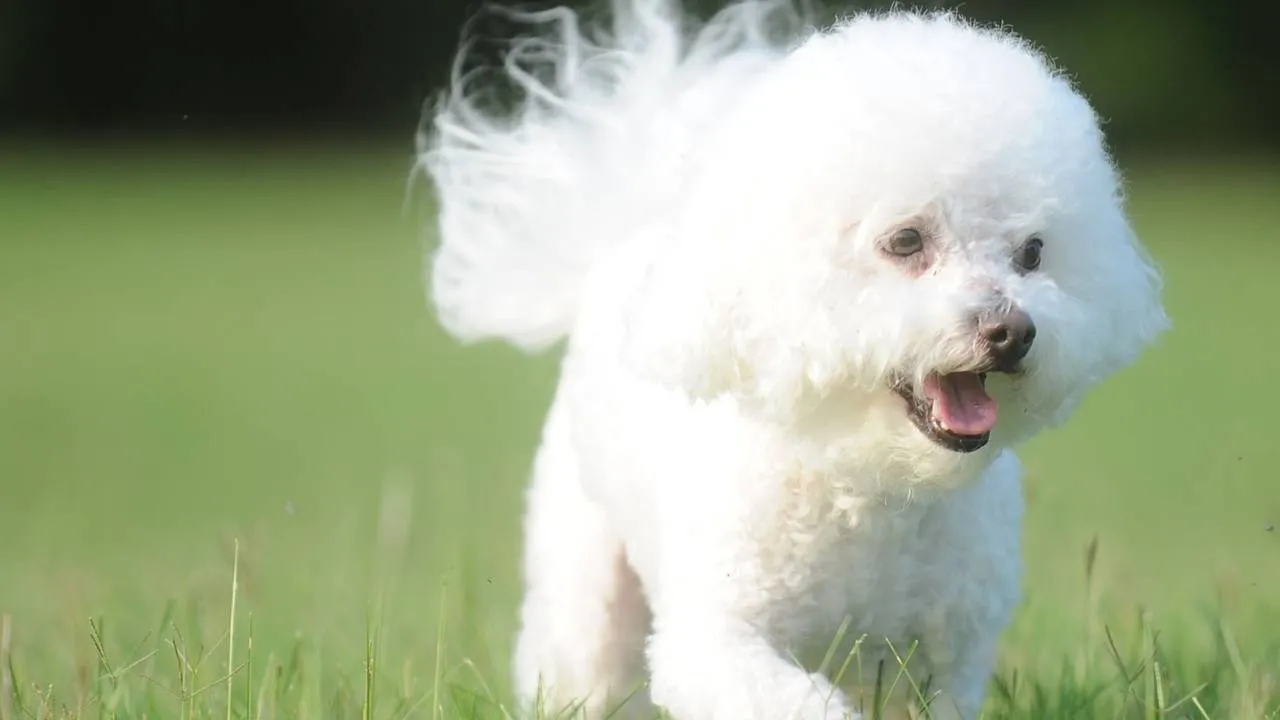
Purina reports that Bichons are compact and sturdy dogs with a well-proportioned build and an intelligent look. If you’re searching for a dog breed that won’t leave fur across your home, the Bichon Frise is a top contender.
Its soft, curly double coat sheds so little that it’s a favorite among people with mild allergies. While it requires consistent grooming, the Bichon’s charm, cheerful personality, and low-shedding coat make the extra maintenance worthwhile.
History
Part of the Barbichon family of small white dogs, the Bichon Frise likely originated on Tenerife in the Canary Islands. Seafaring merchants spread their popularity across Europe, where it captured the hearts of royals from Spain to France during the Renaissance.
After the fall of European aristocracies, many Bichons found new roles as street performers and circus dogs, prized for their intelligence and trainability. The breed survived wars and changing times, eventually being formally recognized by the American Kennel Club in 1973.
Care and Considerations
Despite not shedding, Bichons need daily brushing to avoid mats. Regular trims are necessary to maintain their fluffy, “powderpuff” appearance. Many owners turn to professional groomers every few weeks. Exercise is also important; these playful, affectionate dogs love activity and attention.
Fun Fact
During the French Revolution, many Bichons lost their royal status and became talented circus performers, entertaining crowds with their clever tricks.
3. Irish Water Spaniel
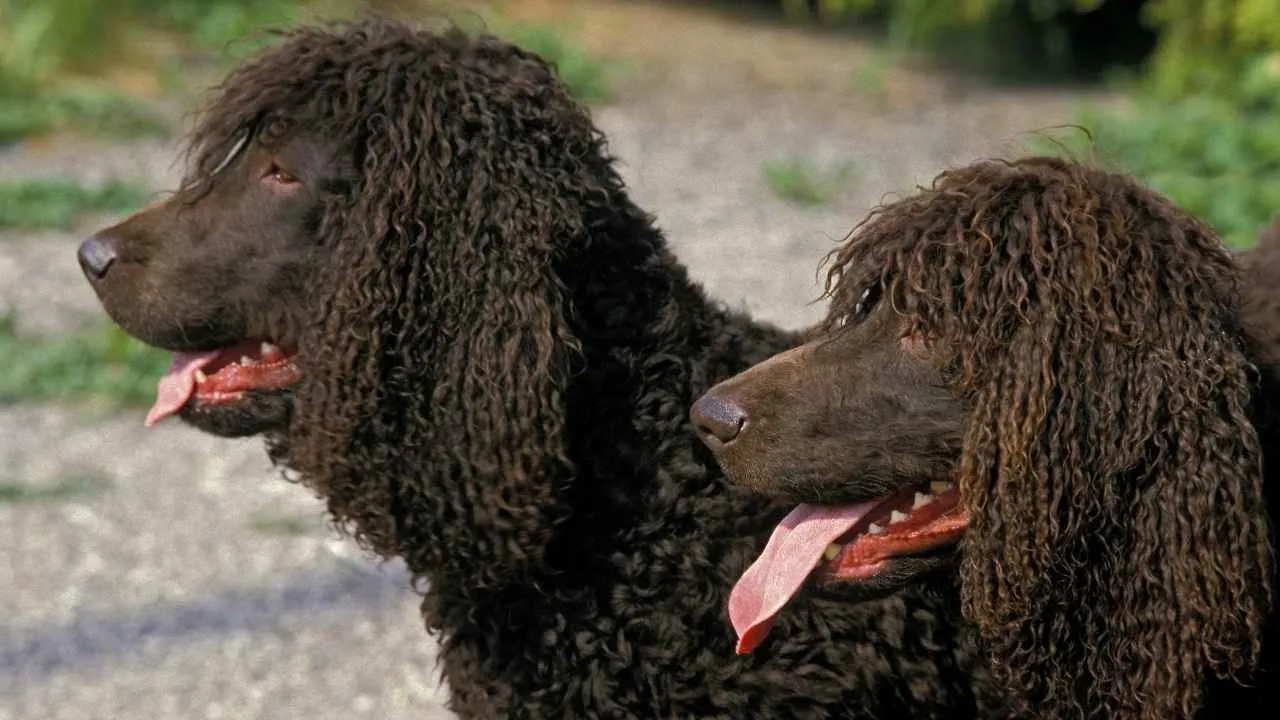
If you’re searching for a hypoallergenic dog that doesn’t cover your home in fur, the Irish Water Spaniel is a solid contender. PetMD states that the Irish Water Spaniel is recognized for its friendly nature, attentiveness, and strong desire to please its family. They make good family dogs.
Known for its tight, water-resistant curls, this breed sheds minimally, making it easier to manage in allergy-sensitive households. Although grooming can be involved, requiring brushing multiple times a week and professional trims, the payoff is a tidy, allergy-friendly coat. Paired with its energetic, social personality, this dog is a great match for families who enjoy active lifestyles.
History
One of the oldest spaniel breeds, the Irish Water Spaniel has a noble lineage dating back to the 7th century. Originally bred in Ireland to retrieve waterfowl, these dogs excelled in hunting thanks to their stamina, swimming skills, and weather-resistant coats. They remain one of the rarest sporting breeds today and are often called the “clowns of the spaniel family” due to their playful and intelligent nature.
Care and Considerations
This breed needs regular brushing to prevent mats and tangles in its dense curls. They’re also highly active and require daily exercise, like long walks or swimming, to stay mentally and physically healthy. Early socialization helps them thrive with children and other pets.
Fun Fact
Despite their thick double coat, Irish Water Spaniels barely shed and may suit some people with dog allergies.
4. Maltese
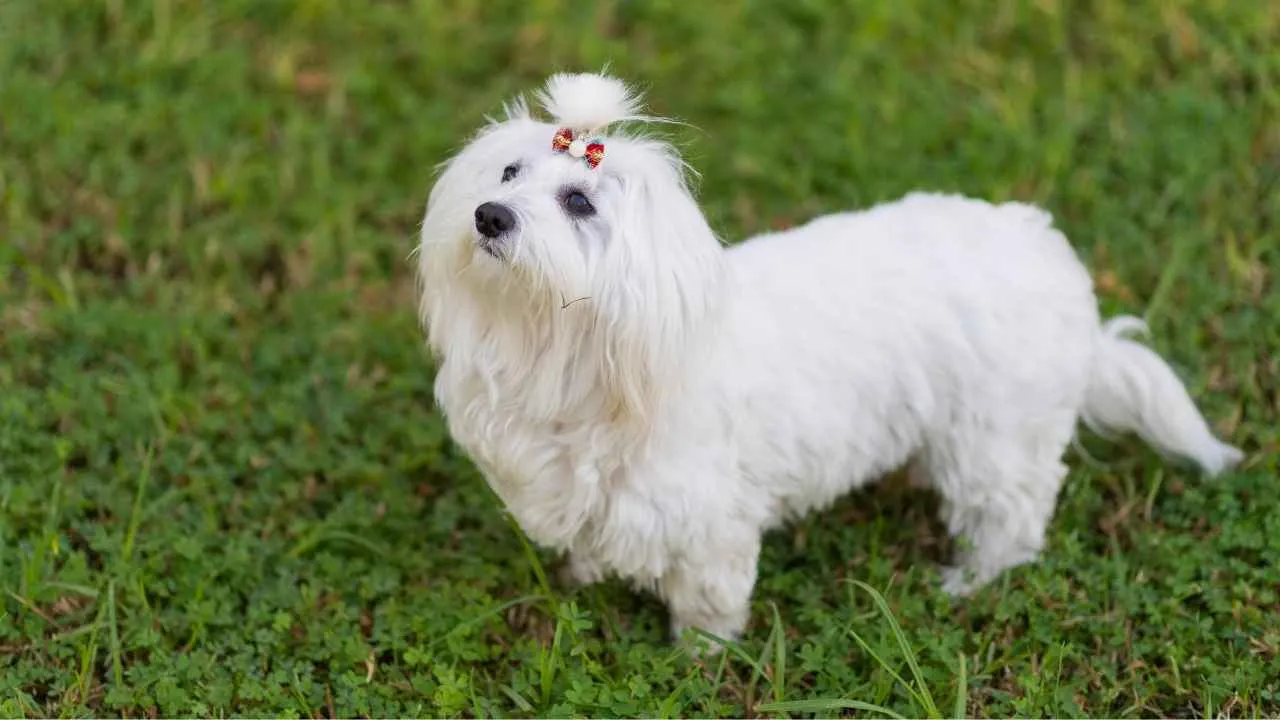
Hills Pet notes that the Maltese is a small-sized breed, typically weighing between four to six pounds (two to three kilograms). The Maltese is a shining example of a breed that doesn’t shed much, making it an ideal choice for allergy-prone households.
With its long, silky white coat that produces minimal dander, this breed avoids the usual mess of fur on furniture and clothing. While their hair is more like human hair than typical dog fur, it requires regular maintenance to stay mat-free and elegant.
History
One of the most ancient toy breeds, the Maltese has graced aristocratic laps for over 2,800 years. Originating from the island of Malta, this breed was adored by nobles across Egypt, Greece, and Rome.
Roman governor Publius famously owned a Maltese named Issa, described as “gentler than a maiden” and “more precious than Indian gems.” Revered for their beauty and charm, these dogs were even immortalized in Greek ceramics and Egyptian tombs.
Care and Considerations
Daily brushing is essential, especially for long coats, to avoid matting and tangles. Regular baths and conditioning keep their signature coat looking pristine. It’s important to monitor for tear staining and dental issues, both common in the breed. Routine ear cleaning and nail trimming should also be part of their grooming regimen.
Fun Fact
In the 1500s, one Maltese was reportedly sold for what would be around $2,000 today, a testament to its timeless appeal.
5. Miniature Schnauzer
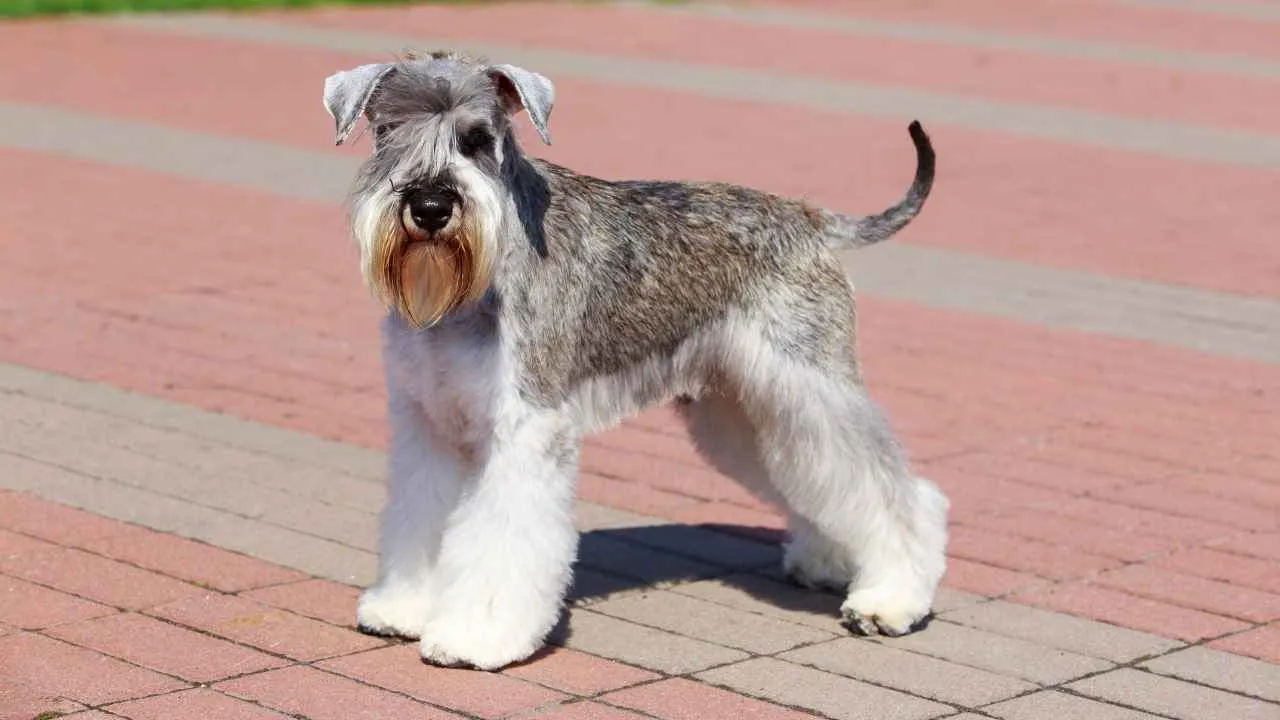
As stated by Britannica, the Miniature Schnauzer is the tiniest and most widely favored of the three Schnauzer varieties. The Miniature Schnauzer is a top contender among non-shedding dog breeds, thanks to its wiry double coat that traps loose hairs and reduces dander spread.
This makes them an excellent option for individuals who are sensitive to allergens or want a cleaner home. While they don’t shed much, their coat does require regular grooming to keep its shape and texture.
History
Originally developed in Germany during the 19th century, the Miniature Schnauzer emerged from crossing small Standard Schnauzers with Affenpinschers and Poodles. Though first recognized as a distinct breed in 1899, their lineage dates back earlier.
This breed retains the iconic Schnauzer traits, bushy eyebrows, bristly beard, and an alert demeanor, in a compact form, making it both functional and endearing. They were bred to be farm ratters and watchdogs, giving them their lively and observant personality.
Care and Considerations
Miniature Schnauzers require routine grooming to prevent matting. Most owners opt for professional clipping every six weeks, while others maintain the coat through regular plucking.
Their beards need daily cleaning to prevent odor, and standard hygiene practices like ear cleaning and nail trimming are essential. Energetic and adaptable, they fit well into various living situations, including homes with children.
Fun Fact
The Miniature Schnauzer is the most popular of all Schnauzer sizes, adored for its intelligence, spunky personality, and compact build.
6. Portuguese Water Dog
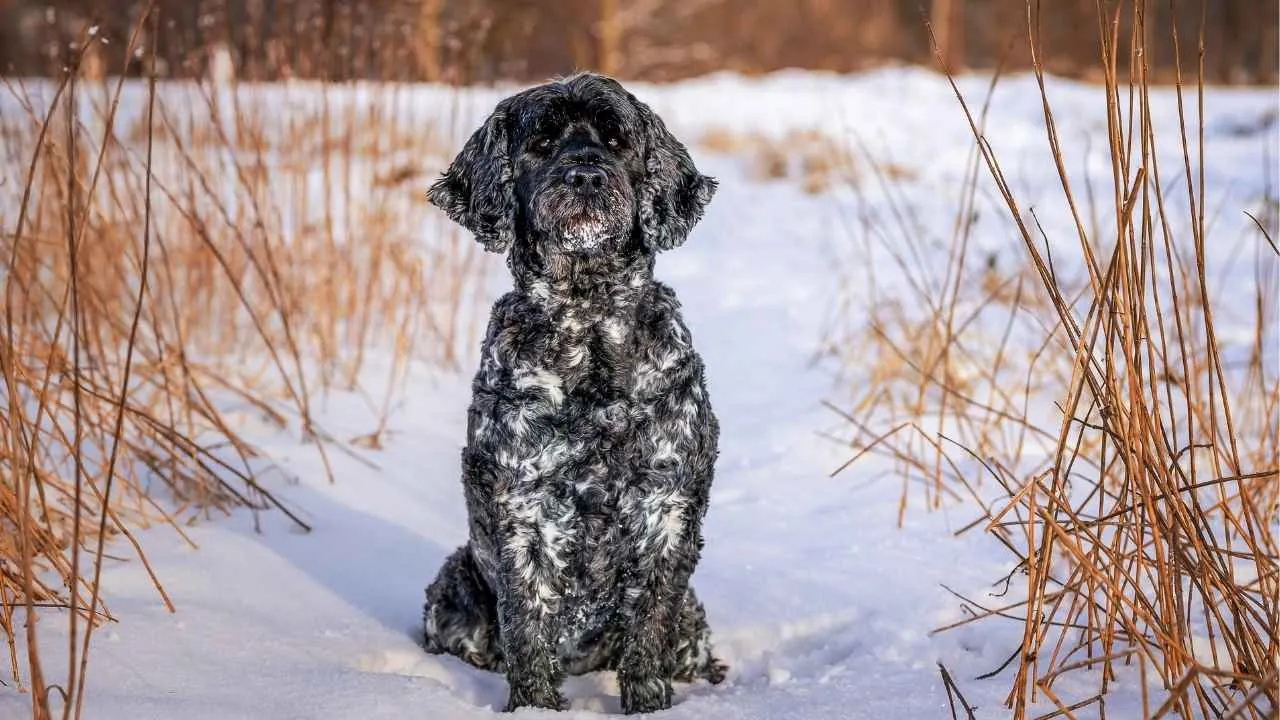
With their dense, curly, or wavy coats, Portuguese Water Dogs are one of the top breeds for people who want a dog that doesn’t shed much. While their hair does require consistent grooming to avoid tangling or matting, they won’t leave fur scattered around your home.
Active and affectionate, these pups are ideal for allergy-conscious households that also want a lively, loyal companion.
History
Dating back to the 13th century, Portuguese Water Dogs were the loyal deckhands of Portugal’s fishing fleets. These strong, agile dogs herded fish into nets, retrieved equipment from the water, and even served as couriers between ships and shore.
Their endurance was legendary, they worked in everything from warm southern waters to the icy coasts of Iceland. Though no longer found on commercial boats, they’ve transitioned to modern life as loving, playful companions.
Care and Considerations
Porties thrive in active households where they get 30 to 60 minutes of exercise daily. Their intelligence demands mental stimulation through play and training. Grooming is essential: regular brushing and frequent trims are a must to maintain their low-shedding coat. Without consistent upkeep, their curls can quickly form painful mats.
Fun Fact
The Portuguese Water Dog once served as a messenger between ships, a canine courier on the high seas.
7. Afghan Hound
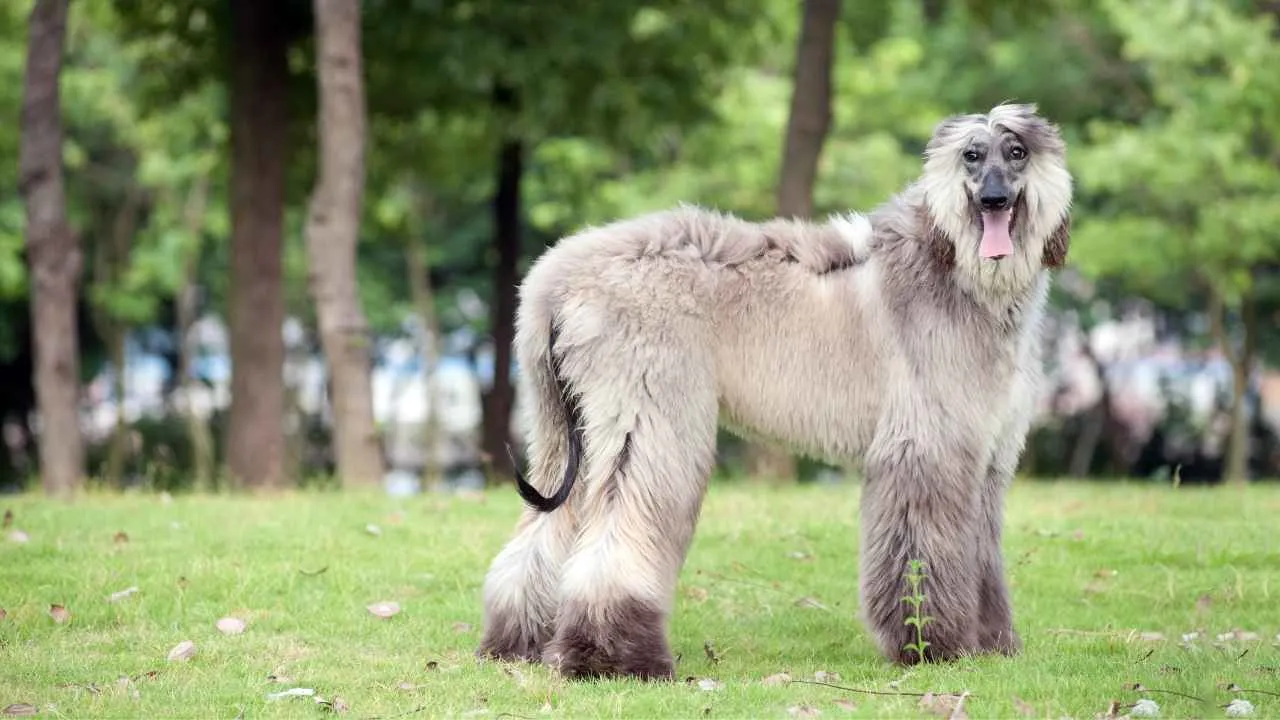
The Afghan Hound’s glamorous, flowing coat might suggest a flurry of fur, but this breed is surprisingly low-shedding. While grooming is a must to keep those long locks looking their best, Afghan Hounds are ideal for allergy-prone homes or those wanting less cleanup. Their minimal dander and unique coat texture make them one of the best dog breeds that don’t shed excessively.
History
The Afghan Hound is believed to be one of the world’s oldest purebred dogs. Though its exact origin is lost to time, it emerged in the mountainous regions of Afghanistan, India, and Pakistan. These sighthounds were prized for their speed, vision, and hunting prowess, often seen accompanying royalty and tribal leaders.
They entered Western history in the late 1800s, gaining popularity among British nobility and eventually captivating American dog lovers in the 20th century.
Care and Considerations
Though they shed little, Afghan Hounds demand high-maintenance grooming. Weekly brushing, several hours at a time, is needed to prevent mats and remove debris. Bathing, conditioning, nail trimming, and dental care are essential to maintain their health and signature elegance. Puppies have shorter, fluffier coats that require less attention but grow out quickly.
Fun Fact
Pablo Picasso immortalized his Afghan Hound, Kabul, in a giant sculpture displayed in Chicago’s Daley Plaza.
8. Chinese Crested
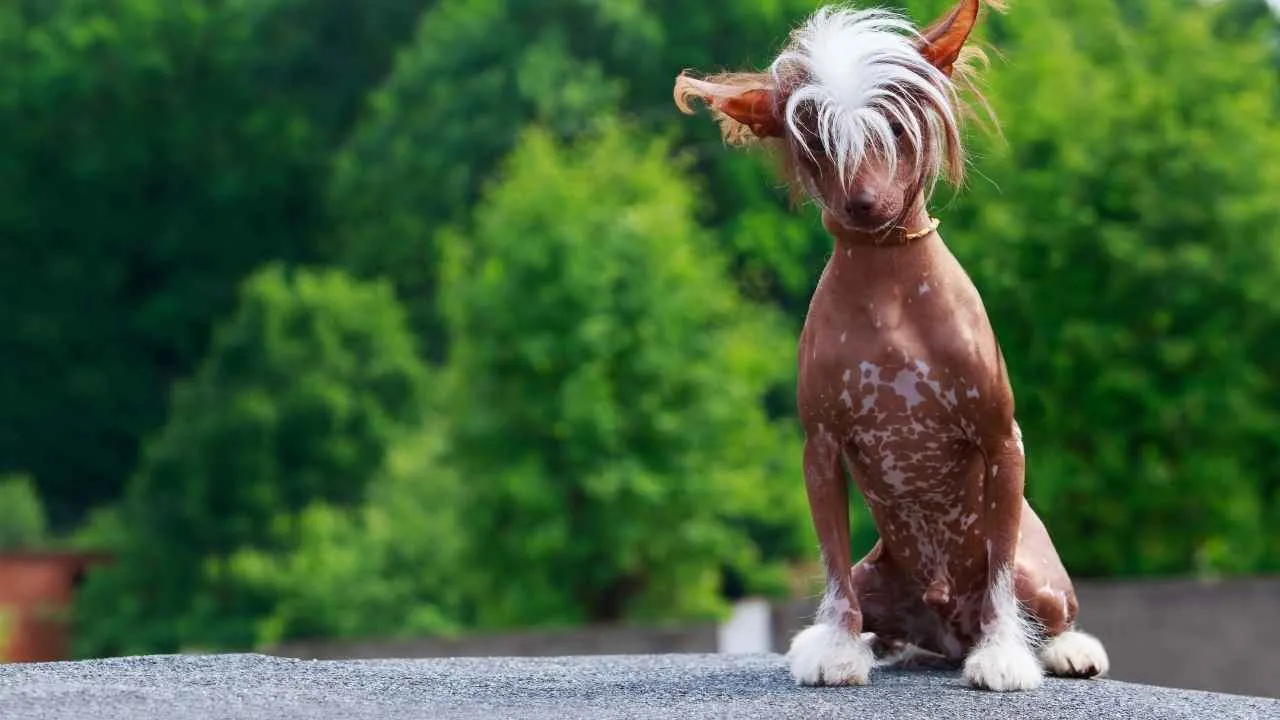
The Chinese Crested is a standout among hypoallergenic dogs, largely because this breed barely sheds. The hairless variety sports silky tufts on its head, tail, and feet, while the powderpuff version has a full, soft coat. Both types produce minimal dander and hair, making them ideal for those who want a clean home or need an allergy-friendly pet.
History
Despite the name, evidence suggests the Chinese Crested likely didn’t originate in China. Genetic studies point to roots in Mexico, where hairless breeds have long existed. The Chinese name may have stuck because sailors once used these dogs as ratters aboard ships, particularly those trading in Asian ports.
Regardless of their origin, they’ve been bred as affectionate companions for generations and have long charmed owners with their delicate appearance and big personalities.
Care and Considerations
While they don’t shed much, Chinese Cresteds still need regular grooming. Hairless types require sunscreen or protective clothing to shield their exposed skin, while powderpuffs benefit from brushing to keep their double coat tangle-free.
Their fragile bones mean play with small children should be closely supervised. These playful, cat-like dogs thrive on companionship and do well in apartments or smaller homes.
Fun Fact
Though often mistaken as Chinese in origin, studies show the Chinese Crested’s genetic lineage may actually trace back to Mexico.
9. Coton de Tulear
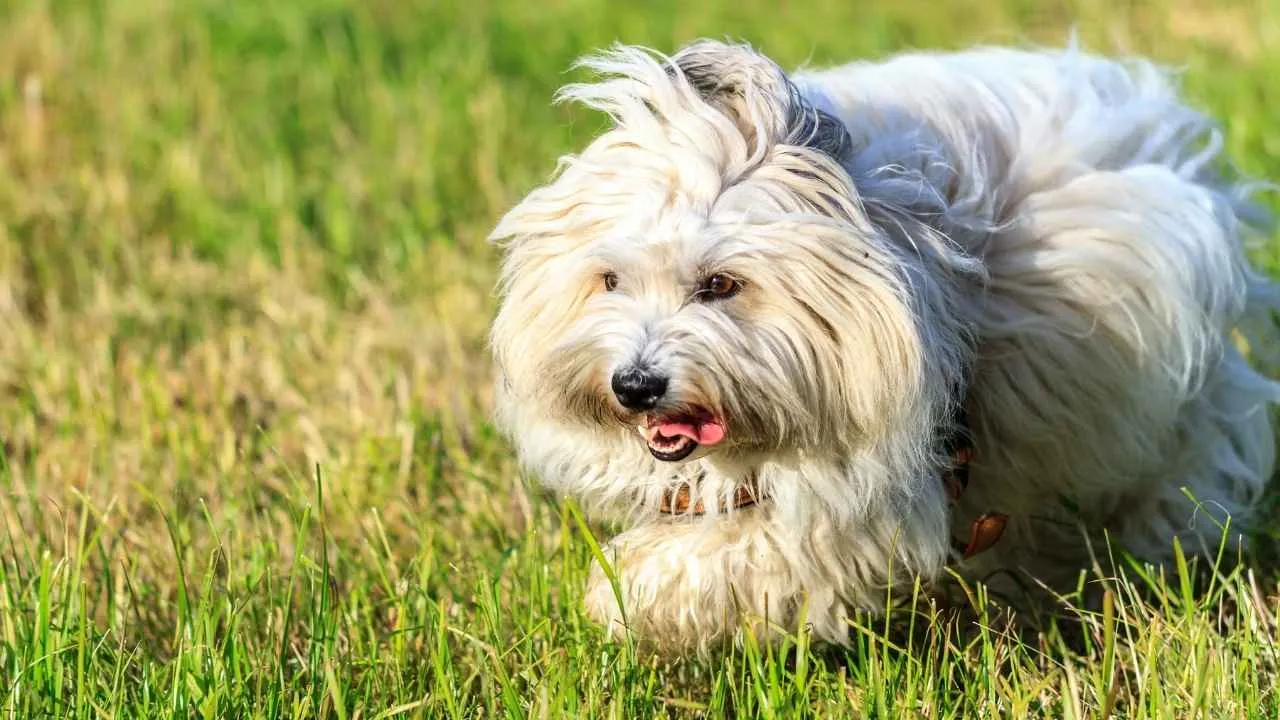
If you’re looking for a fluffy lapdog that won’t turn your furniture into a fur-covered mess, the Coton de Tulear is a top contender. With a cotton-like, low-shedding coat and an affectionate personality, this breed is ideal for allergy-conscious owners who crave constant companionship. However, that beautiful white coat demands dedication, daily brushing is a must to keep mats at bay.
History
The Coton de Tulear takes its name from the port town of Tulear in Madagascar. Originally exclusive to the island’s nobility, these dogs were so prized that laws once banned commoners from owning them. Isolated from the rest of the world, the breed maintained a consistent line for centuries.
Romantic legends suggest Cotons swam ashore after a shipwreck, surviving in the wild before charming their way into royal circles. In the 1960s, French tourists brought them to Europe, where they gained popularity and recognition.
Care and Considerations
Regular grooming is non-negotiable for Cotons, especially if you opt to keep their coat long. Daily brushing with a spray conditioner is needed to prevent painful matting. Weekly ear checks help avoid infections, and positive early grooming experiences are essential to raising a happy, cooperative dog.
Fun Fact
The AKC officially recognized the Coton de Tulear in 2014, centuries after they had already ruled Madagascar’s noble households.
Conclusion
Choosing one of the best hypoallergenic dog breeds means embracing a pet-friendly lifestyle without constantly battling pet hair on your couch, clothes, and floors. While no dog is truly hypoallergenic, many low-shedding breeds, like the affectionate Coton de Tulear or the elegant Bedlington Terrier, produce less pet dander and fewer dead skin cells, making them more suitable for sensitive households.
Breeds such as the Shih Tzu, known for their smooth hair coat and dignified presence as a former royal dog, also fall into the low-shedding category, though they still require diligent grooming to maintain their glamorous appearance, especially around their distinctive feathery tail. Regular coat care not only keeps their hair off your furniture but also helps prevent mats and tangles, improving both hygiene and comfort for your pup.
Ultimately, whether you’re looking for a cuddly lap companion or a stylish breed that’s gentle on allergies, low-shedding dogs offer the best of both worlds. They reduce the mess without compromising on personality, charm, or loyalty, making them ideal additions to many modern homes.


